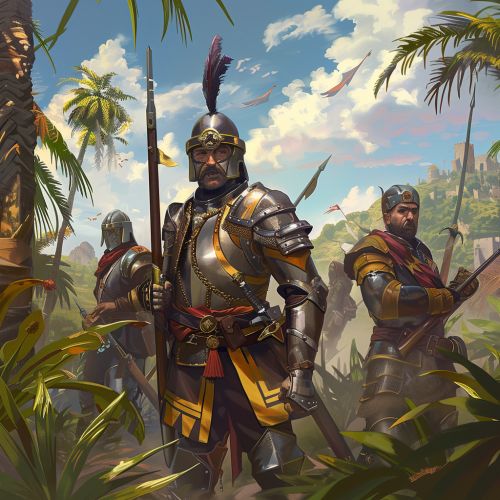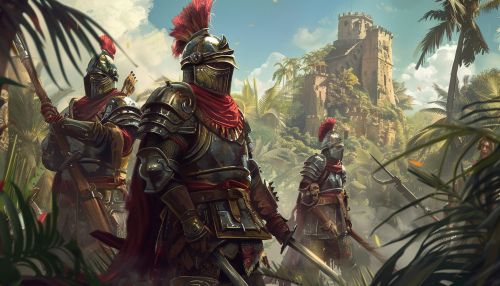Pizarro Brothers
Early Life and Background
The Pizarro Brothers, Francisco and Gonzalo Pizarro, were pivotal figures in the Spanish conquest of the Inca Empire during the 16th century. Born in Trujillo, Spain, Francisco Pizarro González (circa 1471-1476 – 1541) and Gonzalo Pizarro y Alonso (circa 1502 – 1548) were illegitimate sons of Captain Gonzalo Pizarro Rodríguez de Aguilar and Francisca González Mateos. Their early lives were marked by limited formal education and modest means, which contrasted sharply with their later roles as conquerors and administrators in the New World.
Francisco Pizarro: Conquistador and Governor
Early Expeditions
Francisco Pizarro's early expeditions were characterized by his participation in the exploration of the New World alongside Vasco Núñez de Balboa, where he played a crucial role in the discovery of the Pacific Ocean in 1513. His ambition and leadership skills soon led him to seek greater conquests, culminating in his infamous expeditions to Peru.
Conquest of the Inca Empire
The conquest of the Inca Empire began in earnest in 1532 when Francisco Pizarro, with a small force of approximately 168 men, captured the Inca Emperor Atahualpa. This event marked a turning point in the history of the region, as it led to the eventual collapse of the Inca Empire. Pizarro's strategic alliances with local tribes, his use of superior weaponry, and the exploitation of internal conflicts within the Inca leadership were instrumental in his success.
Governance and Legacy
Following the conquest, Francisco Pizarro established the city of Lima, which became the capital of the Viceroyalty of Peru. His governance was marked by efforts to consolidate Spanish control over the region, although his rule was also characterized by conflicts with other Spanish conquistadors, notably Diego de Almagro. Francisco Pizarro's legacy is complex, as he is both credited with expanding Spanish territories and criticized for his brutal methods and the exploitation of indigenous populations.
Gonzalo Pizarro: The Rebel Conquistador
Early Contributions
Gonzalo Pizarro initially supported his brother Francisco in the conquest of Peru, playing a significant role in various military campaigns. His early contributions were crucial in securing Spanish dominance in the region.
Rebellion and Downfall
Gonzalo Pizarro's later years were marked by rebellion against the Spanish Crown. Discontent with the New Laws of 1542, which aimed to protect indigenous people from exploitation, Gonzalo led a revolt against the Viceroy Blasco Núñez Vela. His rebellion culminated in the Battle of Añaquito in 1546, where he emerged victorious. However, his defiance was short-lived, as he was eventually captured and executed in 1548.
Interpersonal Dynamics and Conflicts
The relationship between the Pizarro brothers was complex, characterized by both collaboration and rivalry. While they initially worked together to achieve their goals, their differing ambitions and the pressures of governance often led to conflicts. Francisco's leadership was more strategic and political, whereas Gonzalo's approach was more militant and rebellious.
Impact on Indigenous Populations
The actions of the Pizarro brothers had profound and lasting impacts on the indigenous populations of the Andean region. The conquest led to significant cultural, social, and economic disruptions. The introduction of European diseases, forced labor systems such as the encomienda, and the imposition of Spanish culture and religion resulted in the decimation of indigenous communities and the loss of traditional ways of life.
See Also


